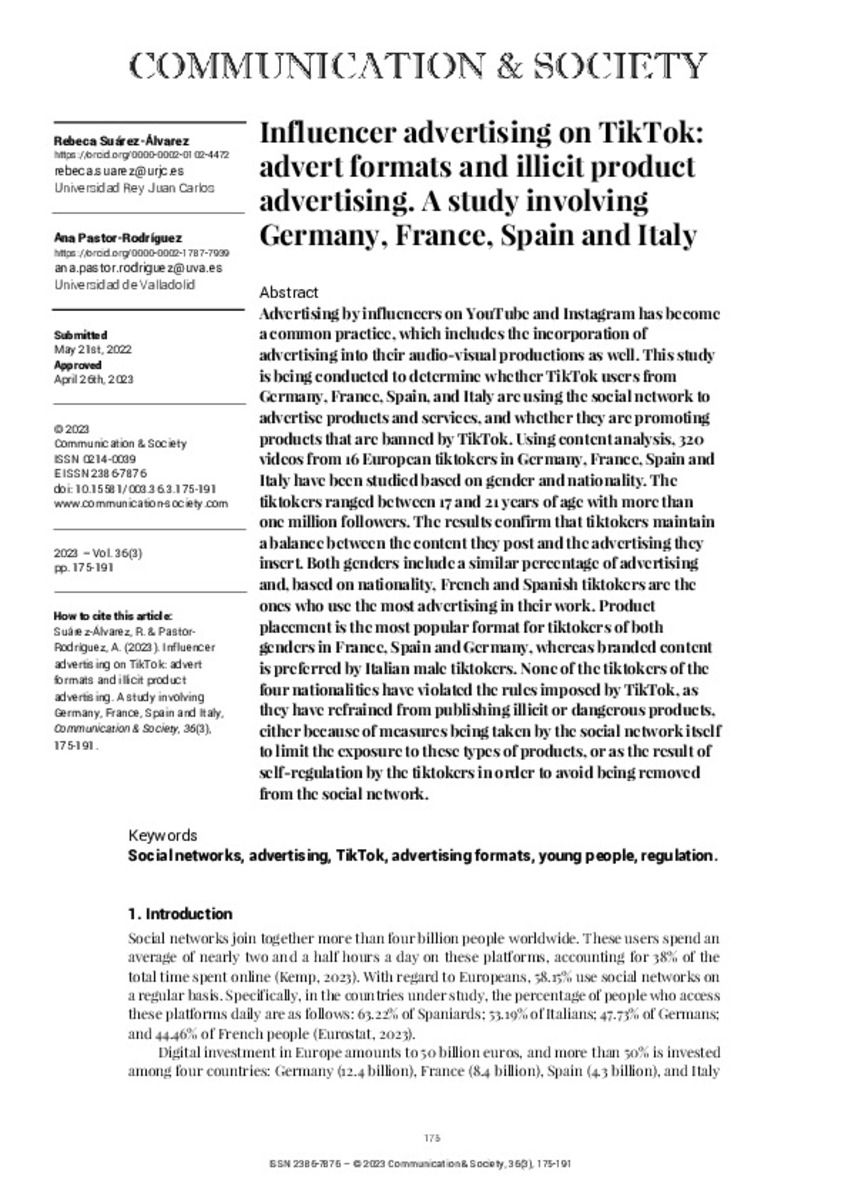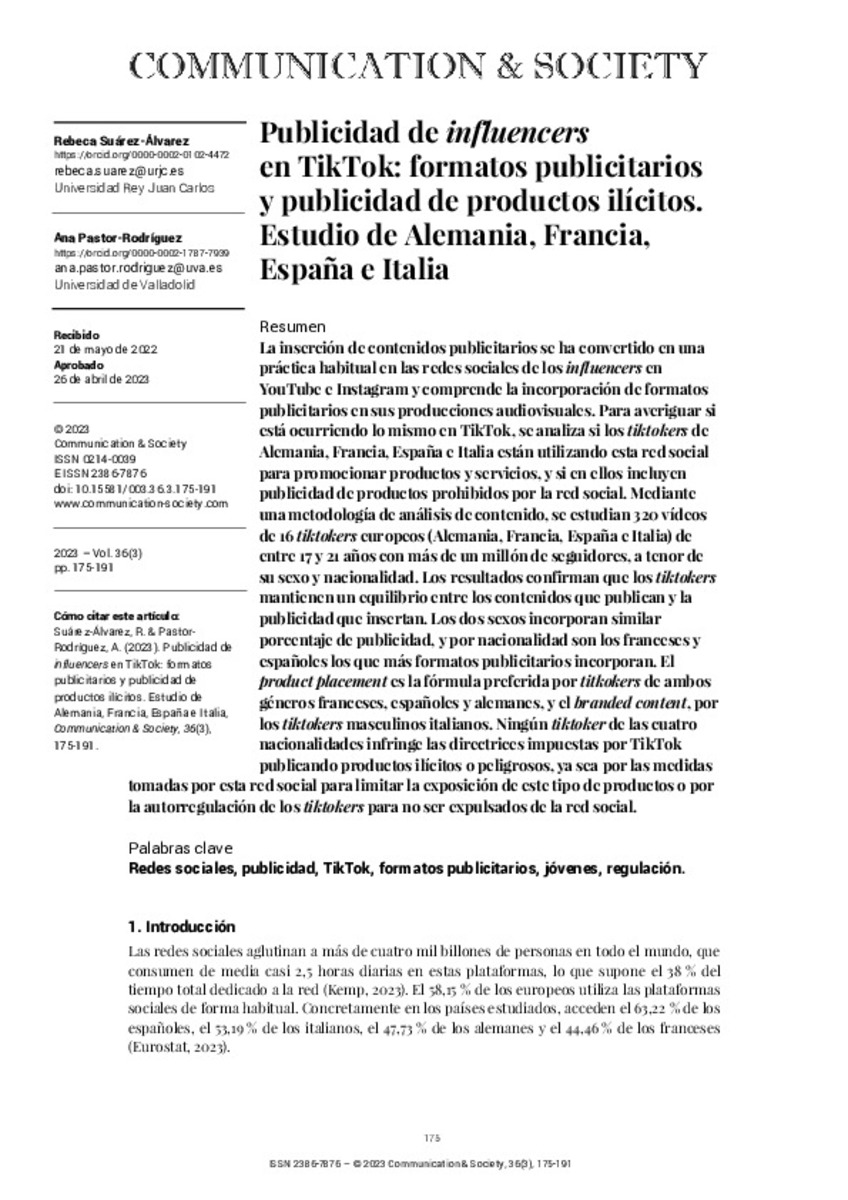Influencer advertising on TikTok: advert formats and illicit product advertising. A study involving Germany, France, Spain and Italy
Keywords:
Redes sociales
publicidad
TikTok
formatos publicitarios
jóvenes
regulación
Publisher:
Servicio de Publicaciones de la Universidad de Navarra
Citation:
Suárez-Álvarez, R. (Rebeca); Pastor-Rodríguez, Ana. "Influencer advertising on TikTok: advert formats and illicit product advertising. A study involving Germany, France, Spain and Italy". Communication & Society. 36 (3), 2023, 175 - 191
Statistics and impact
0 citas en

0 citas en

Items in Dadun are protected by copyright, with all rights reserved, unless otherwise indicated.









